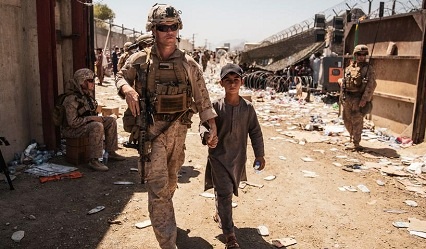Africa-Press-Ethiopia
“As I flew over the city, I could see the flashes of gunfire on the outskirts,” the general recalls. “I was captaining the first aircraft and didn’t get authorization to land. Someone needed to pressure them on the ground.” Flying in, he had been unable to contact the country’s air traffic control center. It had already been captured by the rebels.
The capital city of this war-torn country was about to fall. On the ground were thousands of frantic civilians waiting to be rescued and flown to safety. All hopes were concentrated on one airstrip, but the armada of aircraft on their way did not know whether they would be able to land…
This sounds like the airlift currently taking place at Kabul’s airport in Afghanistan. But Israel Air Force Brig. Gen. (ret.) Asaf Agmon is describing his experience from just over 30 years ago, in May 1991, when he commanded the IAF’s cargo squadrons and led them to Addis Ababa airport for Operation Solomon.
Like many veteran military transport pilots, Agmon watched the recent television reports from Kabul and found it difficult to believe his eyes as he saw the footage of a U.S. C-17 aircraft taking off from the chaotic Hamid Karzai International Airport as dozens of desperate Afghans ran around below. Some even tried to cling to the aircraft as it took off, but fell to their deaths.
Flying into the unknown, to makeshift strips in hostile territory, is a major part of what these pilots train for and do in operational circumstances. But having people climb onto the aircraft in what was supposed to be a secure and orderly airport is another matter.
“When you prepare an operation like this, you have to take into account there will be people trying to come onto the runway,” Agmon says. “You need to think how you secure the perimeter. That is the basic requirement. Without it, you simply don’t go ahead with the operation.”
“The pilot in the cockpit of that C-17 would never have been in such a situation before,” says Brig. Gen. (ret.) Amir Haskel, who captained a C-130 Hercules during Operation Solomon as Israeli airlifted thousands of Ethiopian Jews out of Addis Ababa. “Having people jumping up on the plane from the outside simply isn’t something that should ever happen, and a pilot can’t control it,” he adds. “It isn’t even one of the many scenarios we train for as military transport pilots. You always have people on the ground making sure it doesn’t happen.”
“If Addis Ababa had already fallen to the rebels and there was shooting on the streets, we couldn’t have carried out Operation Solomon,” Agmon says now. “There’s no way you can be sure that as you’re coming into land, someone won’t fire a Strela [the Soviet, shoulder-launched anti-aircraft missile] at you. And once you’re on the ground, even a stray bullet can be fatal for a large aircraft.”
That is why preplanning, timing and, above all, securing the perimeter of the destination airstrip are crucial for a large-scale evacuation airlift to work.






